The Land Of China -- Explore by Province
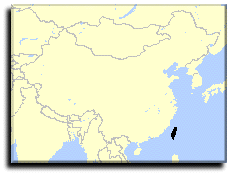 |
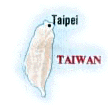 |
Taiwan
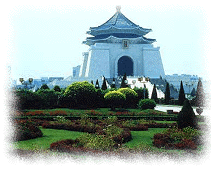
|
Taiwan is a modern industrialized megalopolis clinging to the fringes of an ancient culture; a string of stinking cities at the feet of a glorious mountain range. Taiwan is traditional noodles from a 7-Eleven, aboriginal tribes in mini-skirts, a day of temple rituals followed by waterslide rides.
The human tide of Taipei will sweep you off your feet, but if you step outside the city limits you'll discover why Taiwan is also known as Ilha Formosa, the "beautiful island". Mountain peaks puncturing the sea of clouds, slick black volcanic coastlines, waterfalls shrouded in mist: Taiwan is a computer-generated Chinese watercolor.

|

|
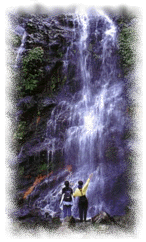
|
Taiwan's climate is subtropical, with an annual average temperatures of 21.7° C (71.2° F) in the north and 24.1° C(75.7° F) in the south.
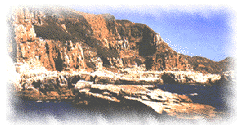
|
Taiwan's population is at about 21,465, 900, which makes the island one of the world's most densely populated places. Except for the approximately 350,000 aborigines, the people of Taiwan originate from the Chinese mainland, most from the coastal province of Fujian. Taiwan's capital is Taipei, whose population holds 2,637,000 people.
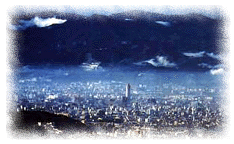
|
Taiwan's capital is packed full of people, cars, and smog - a real hotbed of renao, or liveliness. It's not a relaxing stopover, but the food is excellent, the people are friendly, and there are some top-notch sights. Taipei is divided into four sections by the east-west Chunghsiao Road and the north-south Chungshan Road. Chungsan North Road is full of shops, restaurants, and tempting bakeries, while the narrow lanes and alleys which run off the main road are full of tiny Chinese restaurants selling cheap delicacies.
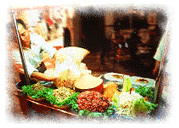
|

|
Yangming Shan
About 30 minutes drive via winding roads north of Taipei is the Yangming Mountain. It is a well-known resort for escaping the heat and humidity in the summer as well as the upbeat city life of Taipei. The peak of the mountain is crowned by Yangming National Park, which features walkways winding through colorful gardens of trees, bushes, fragrant flowers, and grottoes.
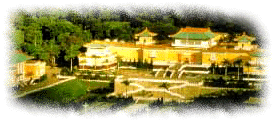
|
On a par with the Louvre, the British Museum, and the Metropolitan Museum of Art, the National Palace Museum has 700,000 Chinese artifacts - so many that the whole collection can't be displayed at one time. The museum is situated in the suburbs of Taipei and was built in 1965. Whichever 15,000 are on display when you show up, you'll probably see artworks made from jade, bronze, enamel, porcelain, lacquerware, tapestry, and embroidery, as well as priceless documents and books containing ancient Chinese calligraphy. In October there are special showings of rare and fragile items.
Peitou
Lying to northwest of Taipei, Peitou is China's largest geothermal area. Its major hot srpings are as big as wells, with water gusting out in great force. The most magnificent, however, are waterfalls that drop from high elevations. The famous Hells Valley has steamy, open sulfur pits, which offer a first-hand look at the natural activity responsible for the areas hot springs. Attractions within easy reach of Peitou centre include the Monastery of Central Harmony, Goddess of Mercy Mountain, the Temple Soaring to the Clouds, and many other scenic spots.
Tienhsiang
The highlight of Tienhsiang is the nearby Taroko Gorge, probably Taiwan's most beautiful scenic spot. The town itself is a lovely little resort at the top of the gorge, nestled between towering cliffs. Relaxing and tranquil, there's not much to do in the town itself, but there are plenty of walks nearby. Exactly one kilometer (about half a mile) uphill from Tienhsiang, the Tunnel Hike is, as its name suggests, a walk which leads through a dripping tunnel, past outstanding scenery, to the Paiyang Waterfall and beyond.
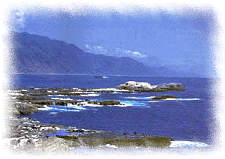
|
Hualien Cliffs and the Coast
Northeast of Hualien, south of Tienhsiang on the Pacific side of Taiwan, lies the island's rugged eastern coast, unsurpassed for its landscape, sea, and sky. This part of the coast looks much like California's wild Big Sur coastline. This area is crowned as one of the Eight Wonders of Taiwan.
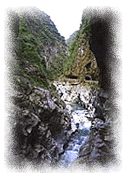
|
Located 15 kilometers north of Hualian, Taroko Gorge is one of the most spectacular natural wonders of the world. Taroko means "beautiful" in the Ami Dialect. A gorge with sheer cliffs dropping away to a rushing river of white water and through which flows the Li-Wu River, Taroko winds sinuously for 19 kilometers from the coast to its upper end at Tienhsiang. The scenic spots along the route are the Light of Zen Monastery, Eternal Spring Shrine, Swallows Grotto, Tunnel of Nine Turns, and the Bridge of Motherly Devotion. The Eternal Spring Shrine, just above the entrance to the gorge, straddles a waterfall: it was built as a memorial to the 450 workers who died building the Taroko highway.
Tainan
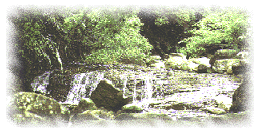
|
Tainan, on the southern east coast, is Taiwan's temple town. Once the country's capital, Tainan is still a stronghold of Taiwanese culture. It's also one of the best places in the country to witness Buddhist parades and festivals. There are hundreds of temples in Tainan: some of the most interesting are the East Mountain, a busy Taoist temple where people come to communicate with dead relatives or exorcise ghosts; Mito, with its magnificent statue of the 1000-armed goddess Kuanyin; Chuhsi, Tainan's largest and most beautiful temple set in an athletic park; and Kaiyuan, a classical Buddhist temple with spacious grounds and plenty of pagodas.
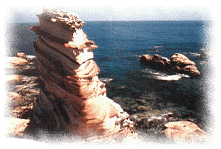
|
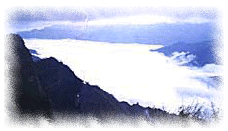
|
If you've spent a bit of time in Taipei, the mountain resort of Alishan will be a real breath of fresh air. Located 72 kilometers east of the city of Chiayi, the Mount Ali Scenic Area is a group of eighteen moutains. The whole area is densely forested with a total forest area of thirty thousand hectares. A couple of lungfulls of the crisp, mountainy oxygen here will get your blood rushing and the heart leaping.
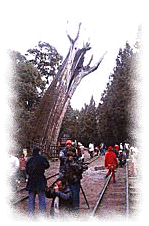
of Alishan |
Try to get to Alishan during the week - 5000 camera-clicking tourists can take the shine off a Chushan sunrise, and weekends here are known as "people mountain people sea". There are plenty of places to stay, but not much in the way of mid-range hotels: expect to bed down in a dormitory or pay big bucks.
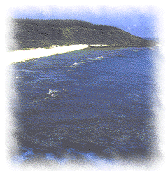
|
Surrounded by clear blue water, Green Island, or Lutao, is a pristine volcanic island in the Pacific Ocean, 33 kilometers east of the city of Taitung. The old name for Green Island is Huoshautao, literally meaning "fire-burning island," because the islanders used to set up bonfires at night to direct their fishermen home or, as another legend tells, that a forest fire burned out most of the island's vegetation in the early Ching dynasty. Although the total length of the coastline of the island is only 20 kilometers and the tallest mountain is only 281 meters high, this 15-square-kilometer island is attracting a growing number of tourists.
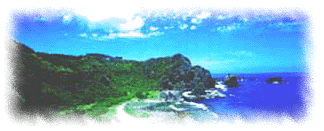
|
The most attractive part of Green Island is its surrounding seas, which are replete with 203 different species of colorful coral and over 300 varieties of fish. The seawater here is among the cleanest and most transparent in the world, ideal for diving.
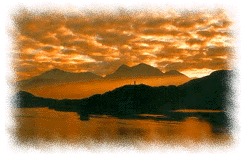
|
Located in Nantou County, Ri-Yue Tan, or Sun-Moon Lake, is Taiwans largest natural lake. The Sun-Moon Lake is more than 9,000,000 square meters (900 hectares) in area, has an average depth of 90 meters, and a circumference of 35 kilometers. The lake is surrounded by mountains with an island in the center, which divides the lake surface into two parts. The northern part is in a round shape like the sun and the southern part looks like a crescent, hence its name. The waters and mountains have made the place an excellent natural wonder.
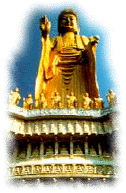
Buddha Mountain |
Visitors with dual interests in Chinese Buddhism and architecture should not miss a visit to the Light of Buddha Mountain. This is the center of Buddhist scholarship in Taiwan. The complex consists of several enormous shrine halls surrounded by cool colonnades, pavilions and pagodas, bridges and footpaths, libraries and meditation halls, ponds and grottoes, and exquisite Buddhist statuary. The most spectacular sight is a 32-meter-high Buddha statue surrounded by a holy host of 480 life-sized smaller Buddha statues. Attractions include the Precious Hall of Great Heroes, the Hall of Great Pity, the Hall of Great Wisdom, and the Pilgrims parlor, where inexpensive lodging and vegetarian meals are available.
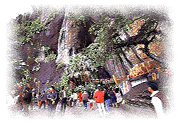
|
After the village of Changyuan comes one of the three attractions along this stretch of coast most popular with tour groups--Pahsien Tung, or the Caves of the Eight Immortals. Despite the name, there are actually 14 caves here. This has been designated as a site of national archeological importance due to the discovery of numerous ancient artifacts. Buddhist temples occupy many of the caves.



 Chinese Culture
Chinese Culture